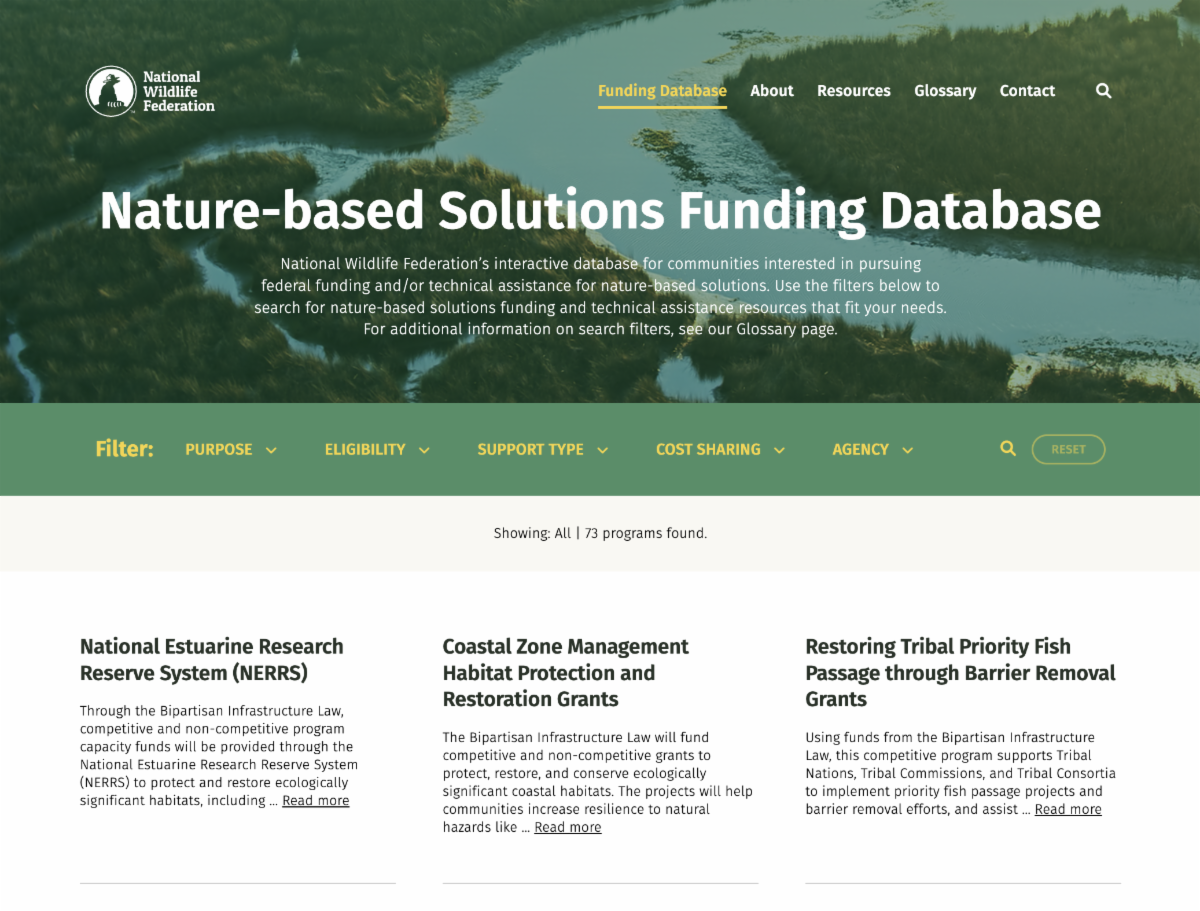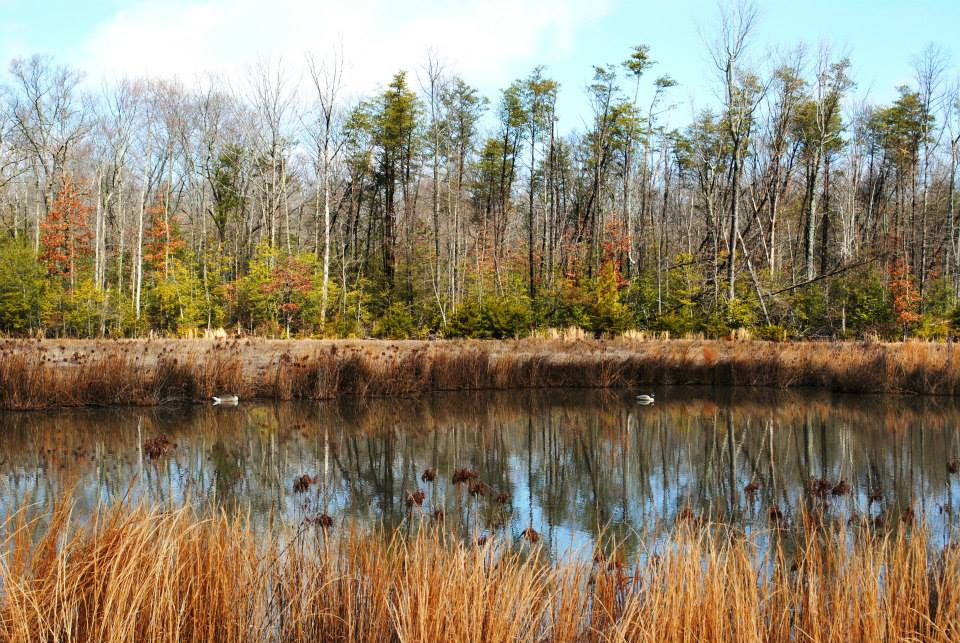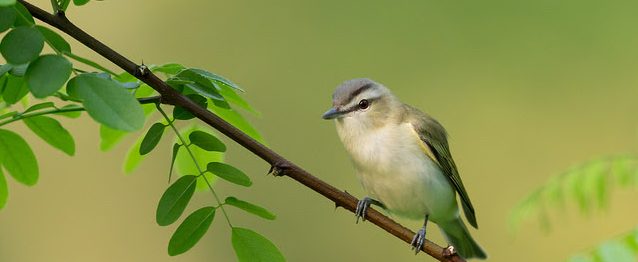Written by Warren Brown
 As climate change causes flooding and droughts to intensify, more and more communities look to conservation and nature-based solutions as long-term cost-effective solutions to protect their communities. There is a myriad of federal programs, and many are enjoying an influx of funding thanks to the Infrastructure Investment and Jobs Act in 2021 and the Inflation Reduction Act in 2022. However, knowing which program to pursue and which meet partner constraints and goals can be challenging.
As climate change causes flooding and droughts to intensify, more and more communities look to conservation and nature-based solutions as long-term cost-effective solutions to protect their communities. There is a myriad of federal programs, and many are enjoying an influx of funding thanks to the Infrastructure Investment and Jobs Act in 2021 and the Inflation Reduction Act in 2022. However, knowing which program to pursue and which meet partner constraints and goals can be challenging.
The Nature-based Solutions Funding Database was released by the National Wildlife Federation (NWF) in December 2022. This database captures more than 70 programs and provides links to 26 more sources of additional information and technical support.
 This interactive database was developed to meet the need for a single gateway to information about the many different federal funding programs available to support land conservation and environmental protection. One purpose of the database is to encourage people to look beyond their specific programmatic lane and learn about other funding sources that can support their mission. For example, some agricultural and transportation programs can support restoration of wildlife habitat or address storm water runoff.
This interactive database was developed to meet the need for a single gateway to information about the many different federal funding programs available to support land conservation and environmental protection. One purpose of the database is to encourage people to look beyond their specific programmatic lane and learn about other funding sources that can support their mission. For example, some agricultural and transportation programs can support restoration of wildlife habitat or address storm water runoff.
The database allows for filters to focus on purpose of assistance, eligibility, type of support, and cost-sharing requirements. This allows users to focus on the programs likely to meet their needs and capabilities. Non-profit organizations are identified as eligible applicants for 45 of the 78 programs listed. States are eligible for 61. 32 of 78 programs require no cost share. It includes a wide range of conservation and environmental protection programs including 32 for habitat and ecosystem, protection. Out of these 32, 20 are ones that non-profits and land trusts can apply for, and six do not require matches. There are also five programs* that are identified as potential sources of grants for permanent protection through easement acquisitions in our region:
- Wetland Reserve Easement Program
- Regional Conservation Partnership Program `
- Forest Legacy Program
- National Coastal Wetlands Conservation Grant Program
- Readiness and Environmental Protection Integration (REPI) Program
*There are also a few flood and hazard mitigation and community development programs that include incidental land acquisition.
This tool should be helpful for anyone working to navigate the complex federal funding landscape, and it should assist communities in identifying funding for technical assistance and capacity building needs. The database was developed by a team of 6 NWF staff members with support from the Walton Family Foundation.

Nature-Based Solutions Funding Database (webpage screenshot)
This database is one of several resources available for helping partners find funding and resources. The EPA financial clearinghouse leads to a trove of information about state, local and private as well as federal sources of funding for land and water protection projects. The Nature-based Solutions Funding Database is one of many tools featured on the Climate Adaptation Knowledge Exchange (CAKE), an interactive knowledge sharing platform that is- essentially a tool chest of tool kits, resources, and case studies focused on different aspects of Climate adaptation.

Nature-Based Solutions Funding Database (webpage screenshot)
Lightning Update is a regular communication of the Chesapeake Conservation Partnership. Any opinions expressed are those of the authors and do not necessarily reflect positions of the Partnership or member organizations.
To share a success story, news, or important event, send your information to:
Support for the Chesapeake Conservation Partnership is provided by:
National Park Service Chesapeake
EPA Chesapeake Bay Program
USDA Forest Service
Pennsylvania Department of Conservation & Natural Resources
Maryland Department of Natural Resources
Virginia Outdoors Foundation
US Fish & Wildlife Service
Chesapeake Conservancy
The Chesapeake Conservation Partnership is co-convened by:




